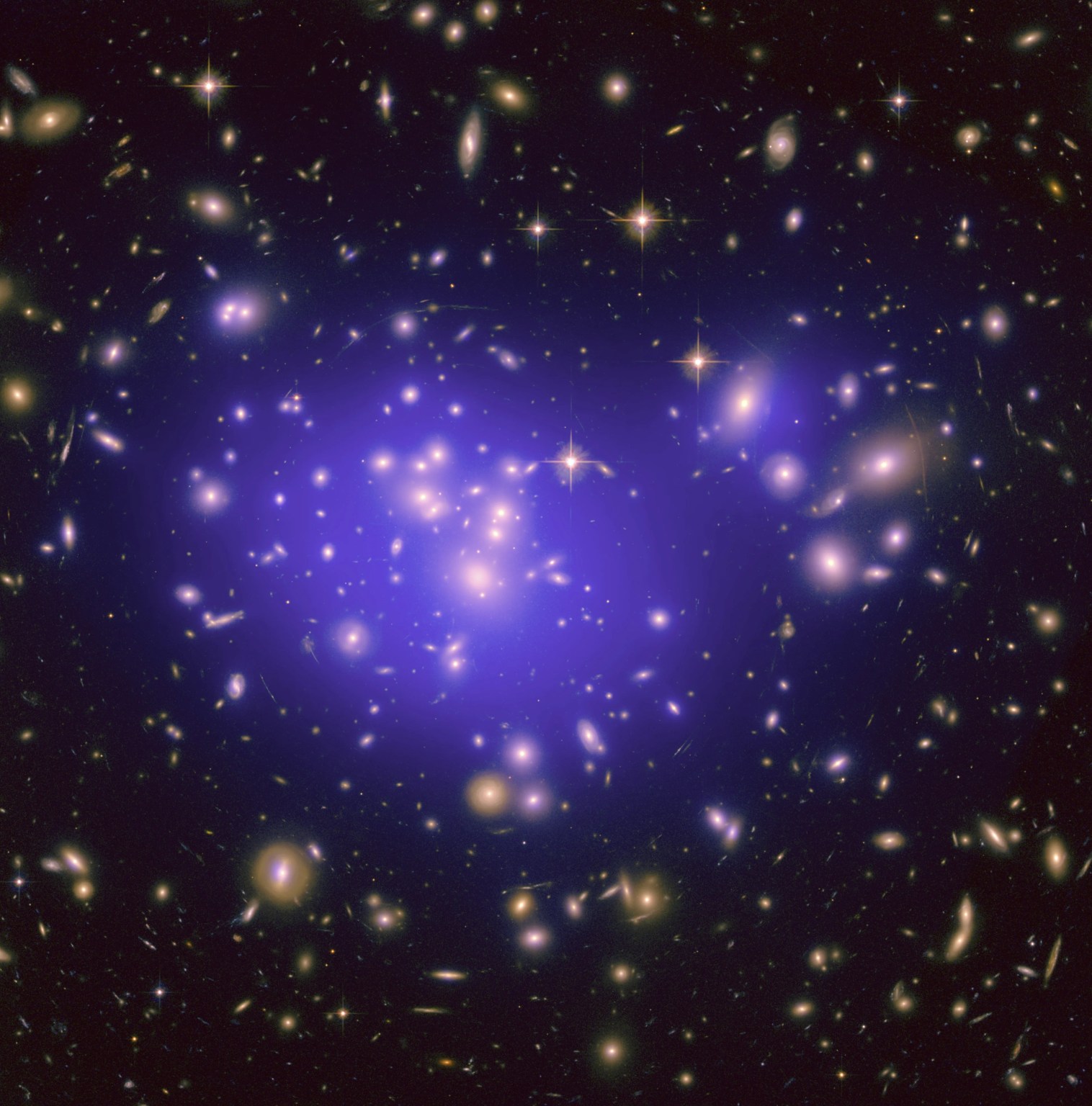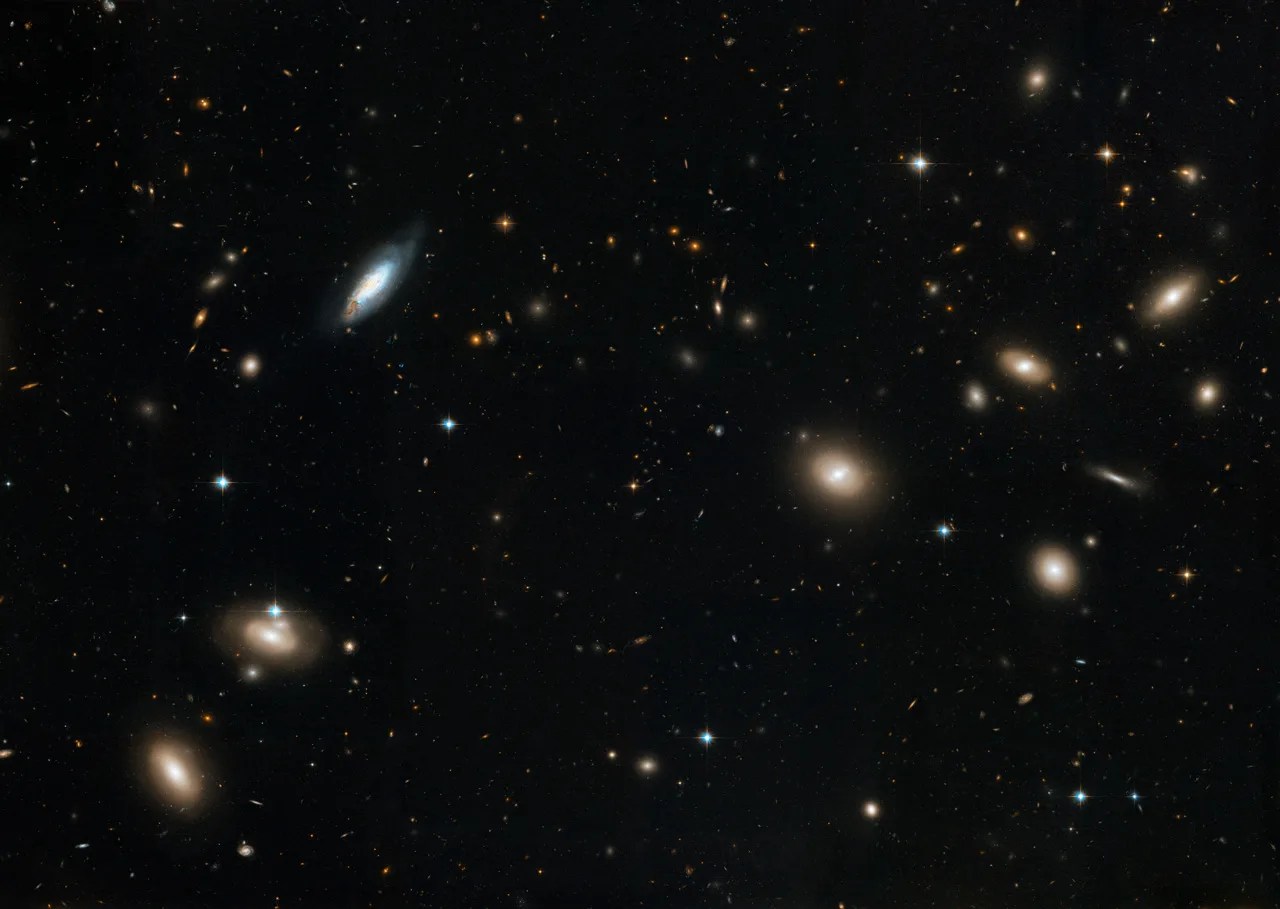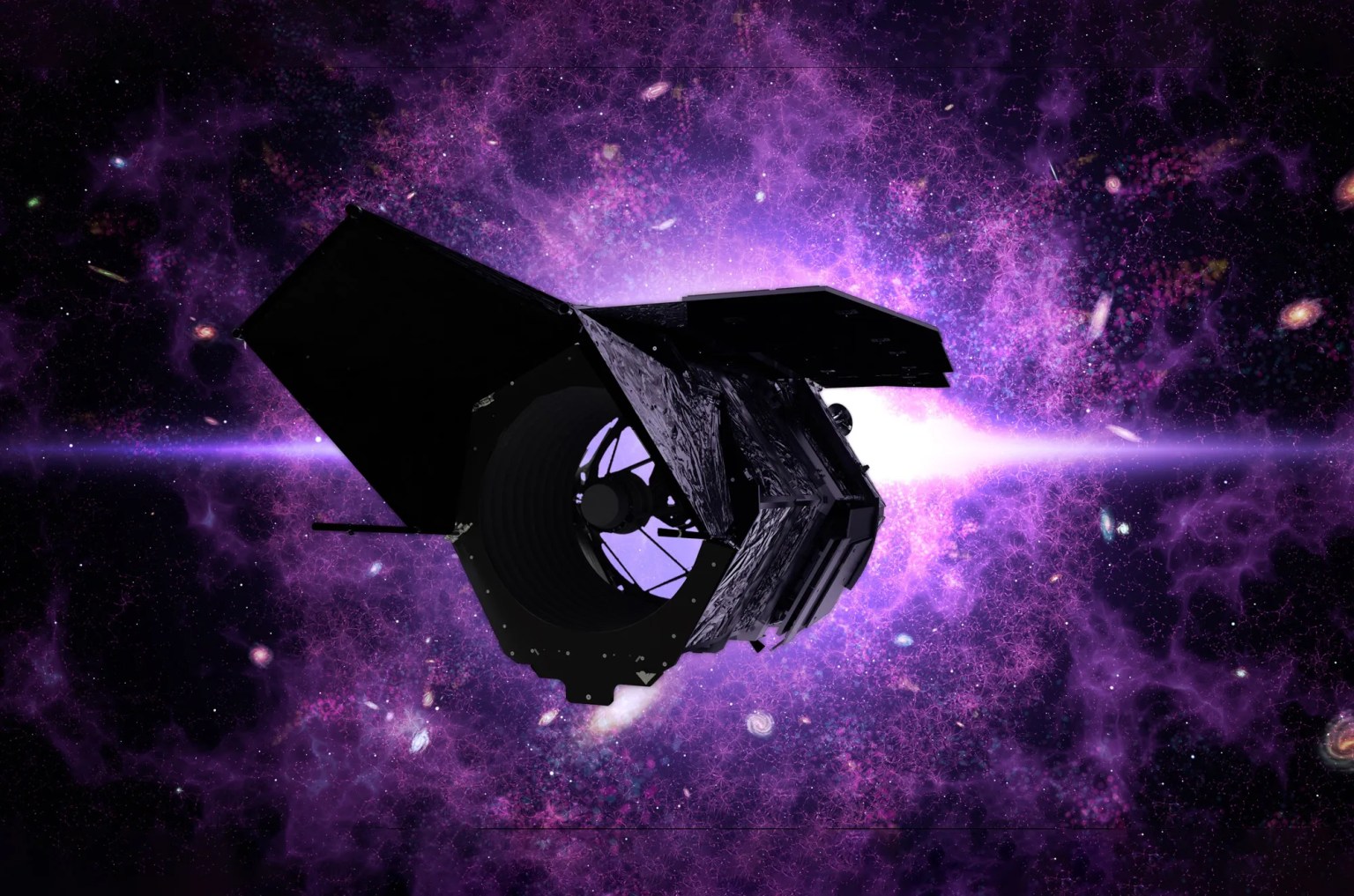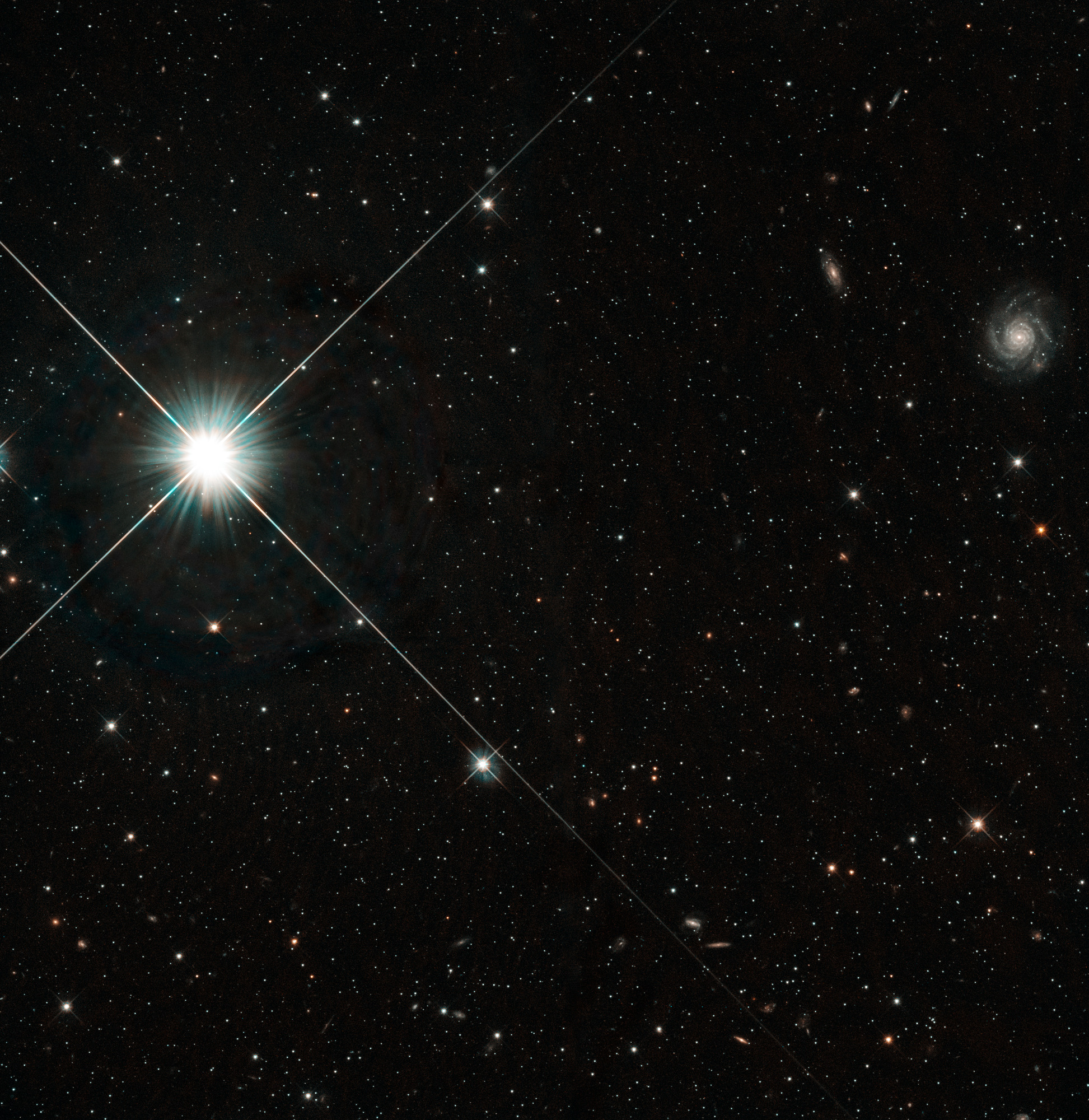5 Min Read NASA’s Hubble Traces Dark Matter in Dwarf Galaxy Using Stellar Motions 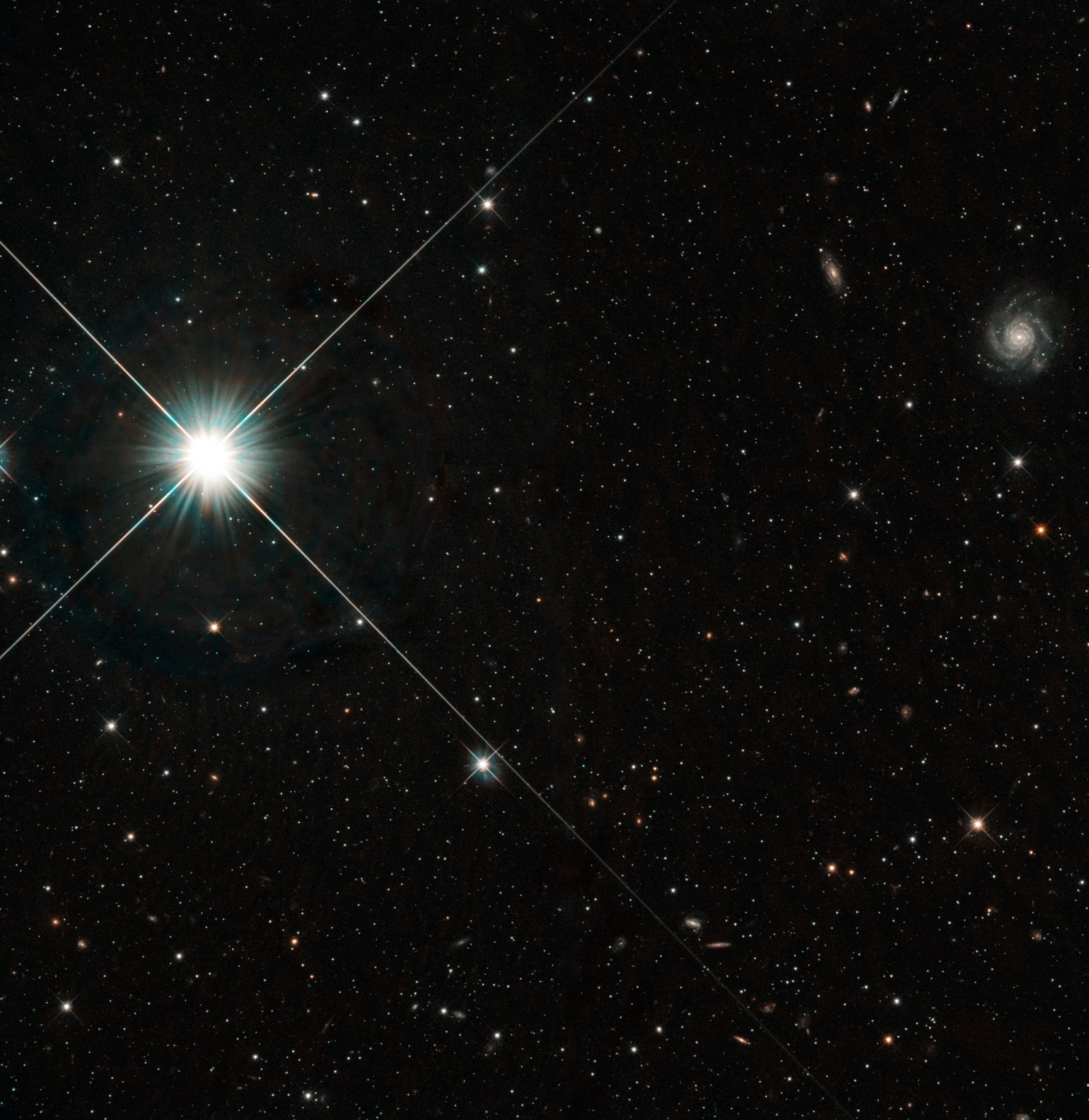 This NASA Hubble Space Telescope image reveals a section of the Draco dwarf galaxy. Credits:
This NASA Hubble Space Telescope image reveals a section of the Draco dwarf galaxy. Credits:
NASA, ESA, Eduardo Vitral, Roeland van der Marel, and Sangmo Tony Sohn (STScI); Image processing: Joseph DePasquale (STScI) The qualities and behavior of dark matter, the invisible “glue” of the universe, continue to be shrouded in mystery. Though galaxies are mostly made of dark matter, understanding how it is distributed within a galaxy offers clues to what this substance is, and how it’s relevant to a galaxy’s evolution.
While computer simulations suggest dark matter should pile up in a galaxy’s center, called a density cusp, many previous telescopic observations have indicated that it is instead more evenly dispersed throughout a galaxy. The reason for this tension between model and observation continues to puzzle astronomers, reinforcing the mystery of dark matter.
A team of astronomers has turned toward NASA’s Hubble Space Telescope to try and clarify this debate by measuring the dynamic motions of stars within the Draco dwarf galaxy, a system located roughly 250,000 light-years from Earth. Using observations that spanned 18 years, they succeeded in building the most accurate three-dimensional understanding of stars’ movements within the diminutive galaxy. This required scouring nearly two decades of Hubble archival observations of the Draco galaxy.
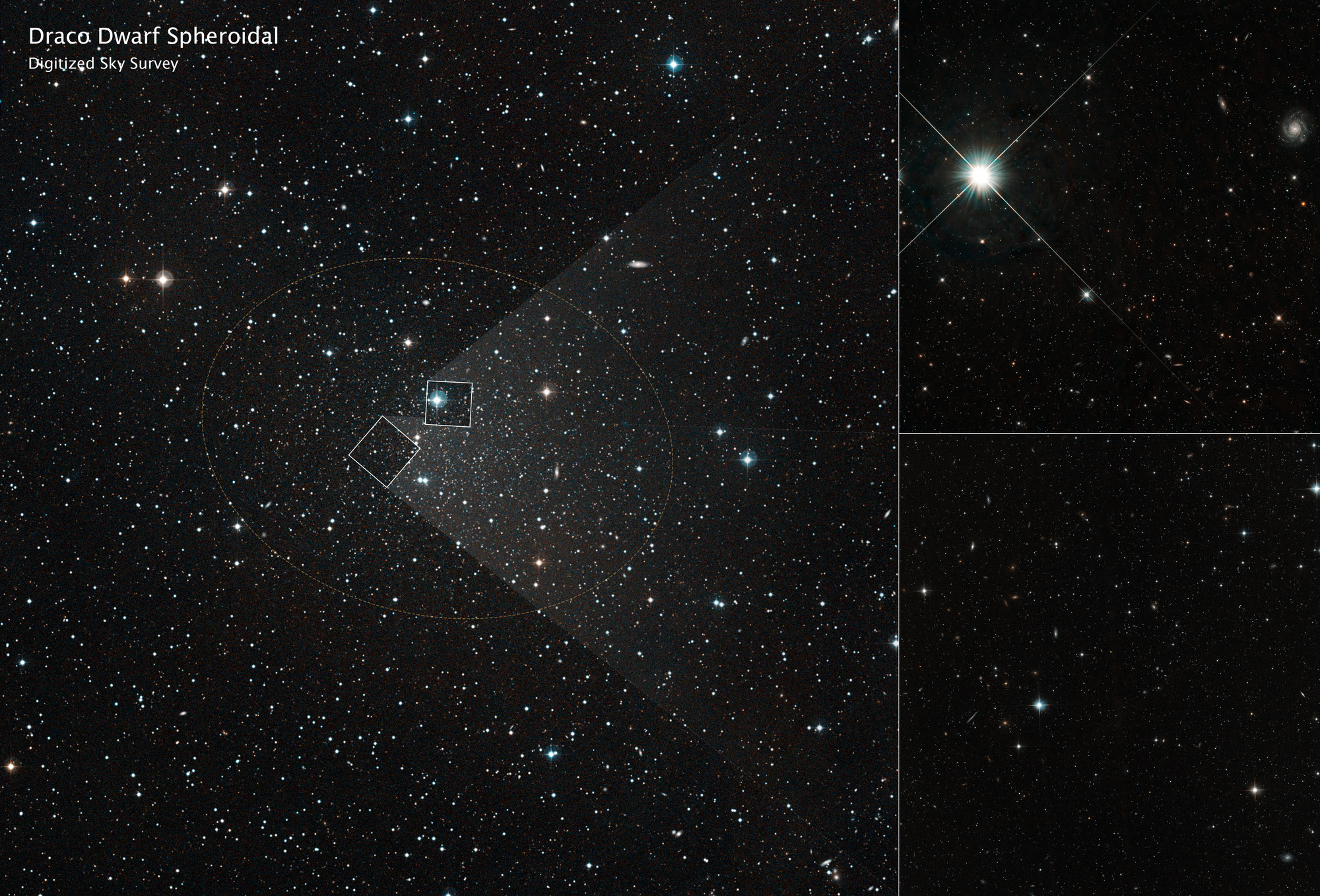 A team of astronomers analyzed observations by NASA’s Hubble Space Telescope taken over a span of 18 years to measure the dynamic motions of stars within the Draco dwarf galaxy. The telescope’s extensive baseline and data archive enabled the team to build the most accurate three-dimensional map of the stars’ movements within the system. These improved measurements are helping to shed “light” on the mysterious qualities and behavior of dark matter, the universe’s invisible “glue.” The left image is from the Digitized Sky Survey (DSS). It presents a wider view of the region. The two right-side images are Hubble views. NASA, ESA, Eduardo Vitral, Roeland van der Marel, and Sangmo Tony Sohn (STScI), DSS; Image processing: Joseph DePasquale (STScI)
A team of astronomers analyzed observations by NASA’s Hubble Space Telescope taken over a span of 18 years to measure the dynamic motions of stars within the Draco dwarf galaxy. The telescope’s extensive baseline and data archive enabled the team to build the most accurate three-dimensional map of the stars’ movements within the system. These improved measurements are helping to shed “light” on the mysterious qualities and behavior of dark matter, the universe’s invisible “glue.” The left image is from the Digitized Sky Survey (DSS). It presents a wider view of the region. The two right-side images are Hubble views. NASA, ESA, Eduardo Vitral, Roeland van der Marel, and Sangmo Tony Sohn (STScI), DSS; Image processing: Joseph DePasquale (STScI)
Download this image
“Our models tend to agree more with a cusp-like structure, which aligns with cosmological models,” said Eduardo Vitral of the Space Telescope Science Institute (STScI) in Baltimore and lead author of the study. “While we cannot definitively say all galaxies contain a cusp-like dark matter distribution, it’s exciting to have such well measured data that surpasses anything we’ve had before.”
Charting the Movements of Stars To learn about dark matter within a galaxy, scientists can look to its stars and their movements that are dominated by the pull of dark matter. A common approach to measure the speed of objects moving in space is by the Doppler Effect – an observed change of the wavelength of light if a star is approaching or receding from Earth. Although this line-of-sight velocity can provide valuable insight, only so much can be gleaned from this one-dimensional source of information.
Besides moving closer or further away from us, stars also move across the sky, measured as their proper motion. By combining line-of-sight velocity with proper motions, the team created an unprecedented analysis of the stars’ 3D movements.
“Improvements in data and improvements in modeling usually go hand in hand,” explained Roeland van der Marel of STScI, a co-author of the paper who initiated the study more than 10 years ago. “If you don’t have very sophisticated data or only one-dimensional data, then relatively straightforward models can often fit. The more dimensions and complexity of data you gather, the more complex your models need to be to truly capture all the subtleties of the data.”
A Scientific Marathon (Not a Sprint) Since dwarf galaxies are known to have a higher proportion of dark matter content than other types of galaxies, the team honed in on the Draco dwarf galaxy, which is a relatively small and spheroidal nearby satellite of the Milky Way galaxy.
“When measuring proper motions, you note the position of a star at one epoch and then many years later measure the position of that same star. You measure the displacement to determine how much it moved,” explained Sangmo Tony Sohn of STScI, another co-author of the paper and the principal investigator of the latest observational program. “For this kind of observation, the longer you wait, the better you can measure the stars shifting.”
The team analyzed a series of epochs spanning from 2004 to 2022, an extensive baseline that only Hubble could offer, due to the combination of its sharp stable vision and record time in operation. The telescope’s rich data archive helped decrease the level of uncertainty in the measurement of the stars’ proper motions. The precision is equivalent to measuring an annual shift a little less than the width of a golf ball as seen on the Moon from Earth.
With three dimensions of data, the team reduced the amount of assumptions applied in previous studies and considered characteristics specific to the galaxy – such as its rotation, and distribution of its stars and dark matter – in their own modeling efforts.
An Exciting Future The methodologies and models developed for the Draco dwarf galaxy can be applied to other galaxies in the future. The team is already analyzing Hubble observations of the Sculptor dwarf galaxy and the Ursa Minor dwarf galaxy.
Studying dark matter requires observing different galactic environments, and also entails collaboration across different space telescope missions. For example, NASA’s upcoming Nancy Grace Roman Space Telescope will help reveal new details of dark matter’s properties among different galaxies thanks to its ability to survey large swaths of the sky.
“This kind of study is a long-term investment and requires a lot of patience,” reflected Vitral. “We’re able to do this science because of all the planning that was done throughout the years to actually gather these data. The insights we’ve collected are the result of a larger group of researchers that has been working on these things for many years.”
These results are accepted for publication in The Astrophysical Journal.
The Hubble Space Telescope has been operating for over three decades and continues to make ground-breaking discoveries that shape our fundamental understanding of the universe. Hubble is a project of international cooperation between NASA and ESA (European Space Agency). NASA’s Goddard Space Flight Center in Greenbelt, Maryland, manages the telescope and mission operations. Lockheed Martin Space, based in Denver, Colorado, also supports mission operations at Goddard. The Space Telescope Science Institute (STScI) in Baltimore, Maryland, which is operated by the Association of Universities for Research in Astronomy, conducts Hubble science operations for NASA.
Explore More
Hubble Space Telescope
Shining a Light on Dark Matter
Mystery of Galaxy’s Missing Dark Matter Deepens
Hubble Detects Smallest Known Dark Matter Clumps
Detailed Dark Matter Map Yields Clues to Galaxy Cluster Growth
Hubble Focus E-Book: Dark Universe
NASA’s Curious Universe Podcast: Welcome to the Dark Side
Dark Matter 101: Looking for the Missing Mass
All image products for this article
Facebook logo @NASAHubble @NASAHubble Instagram logo @NASAHubble Media Contacts:
Claire Andreoli
NASA’s Goddard Space Flight Center, Greenbelt, MD
claire.andreoli@nasa.gov
Abigail Major and Ray Villard
Space Telescope Science Institute, Baltimore, MD
Science Contacts:
Eduardo Vitral, Roeland van der Marel, and Sangmo Tony Sohn
Space Telescope Science Institute, Baltimore, MD
Details Last Updated Jul 11, 2024 Editor Andrea Gianopoulos Location NASA Goddard Space Flight Center Related Terms Astrophysics Astrophysics Division Dark Matter Dark Matter & Dark Energy Goddard Space Flight Center Hubble Space Telescope Missions The Universe
Keep Exploring Discover More Topics From NASA Hubble Space Telescope
Since its 1990 launch, the Hubble Space Telescope has changed our fundamental understanding of the universe.

Shining a Light on Dark Matter
